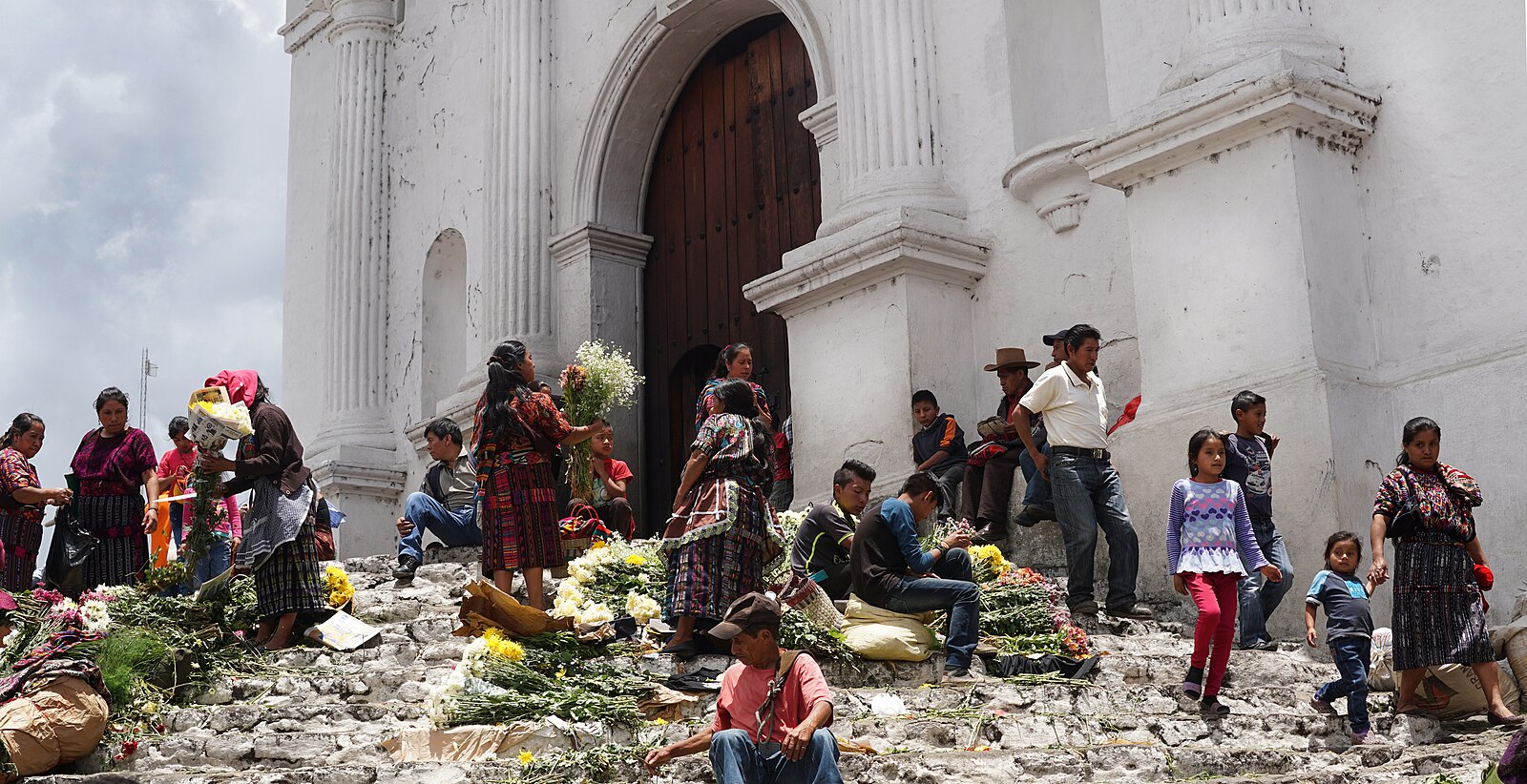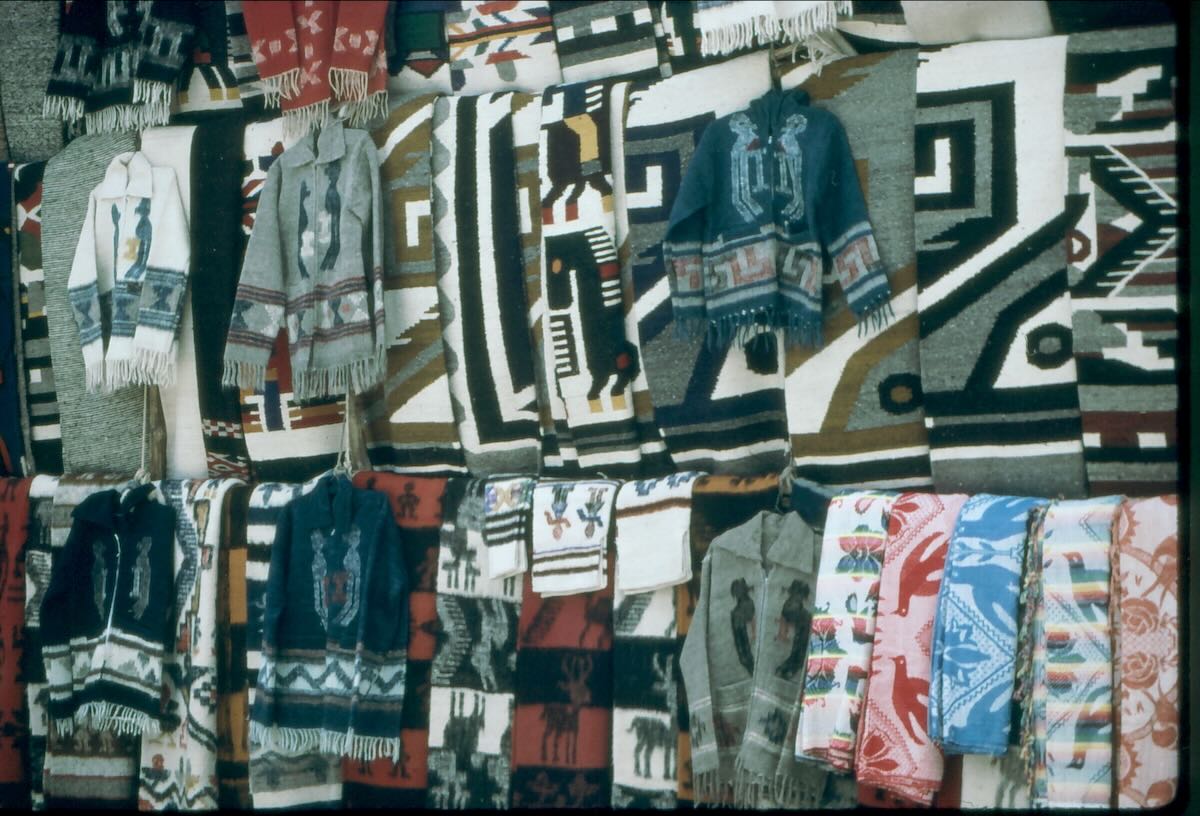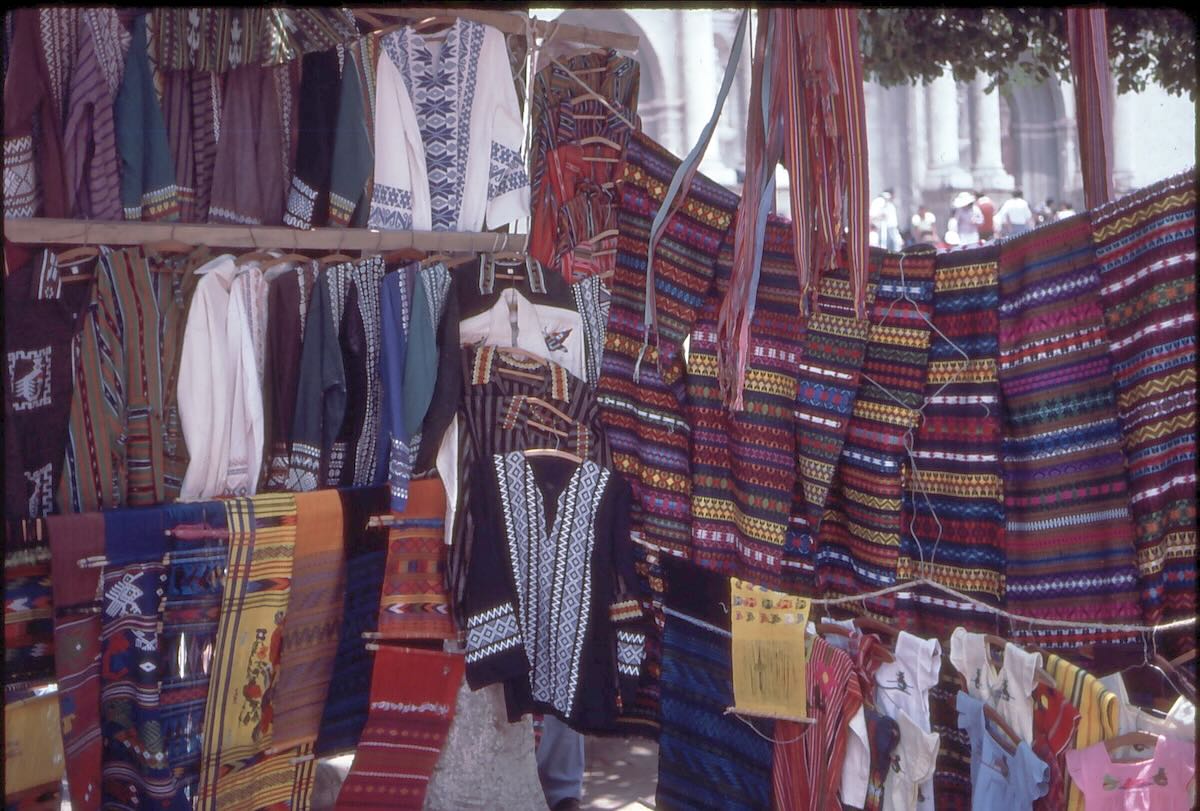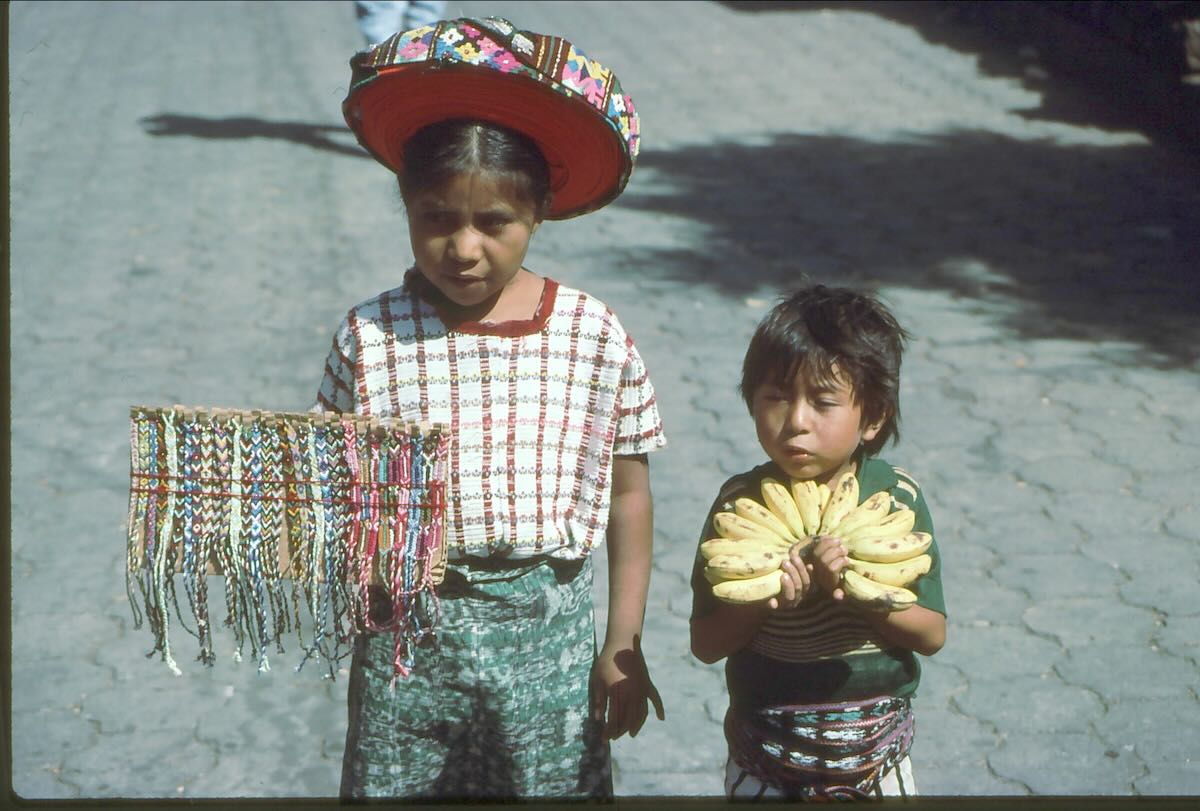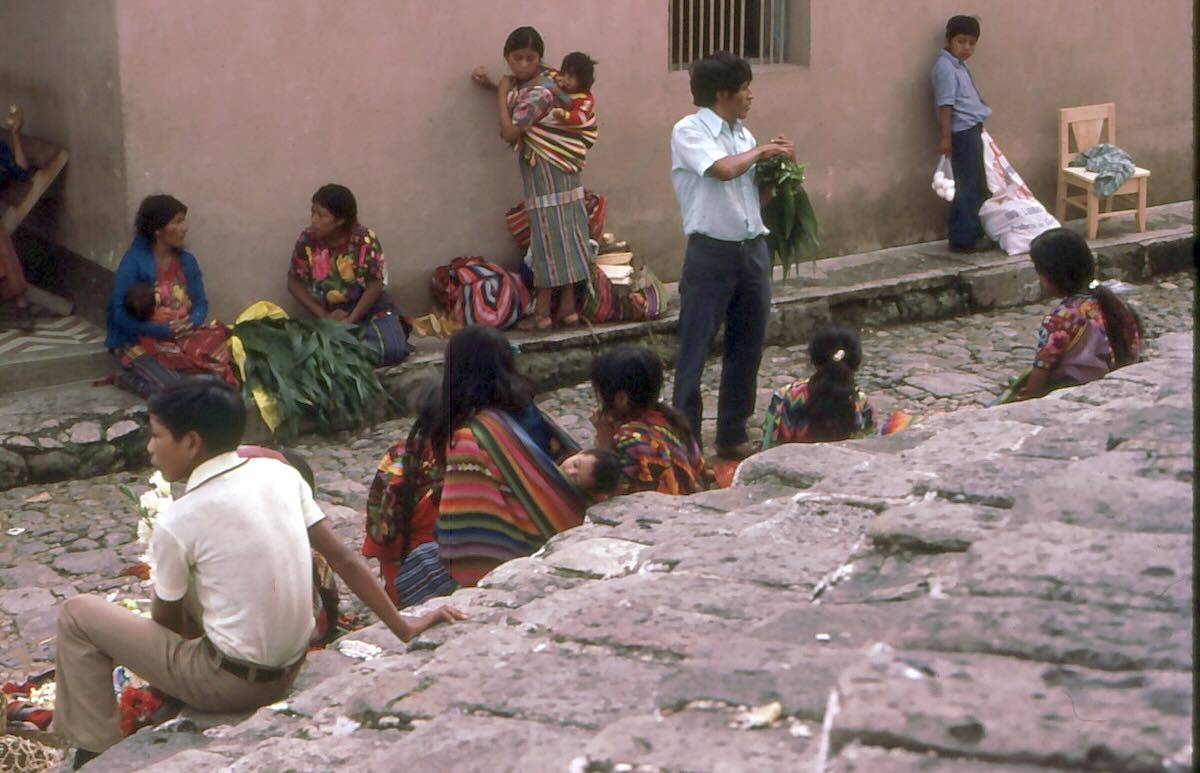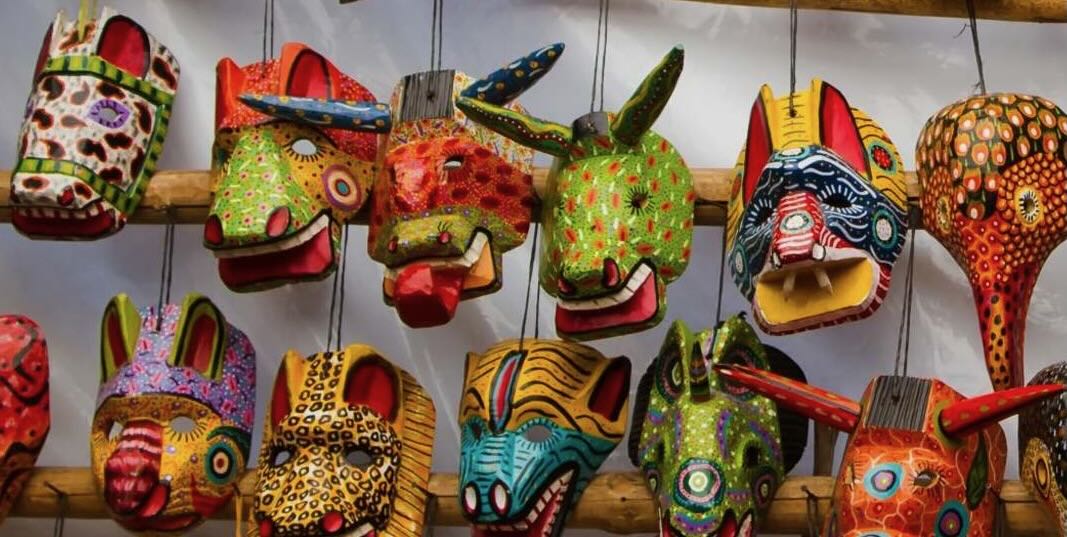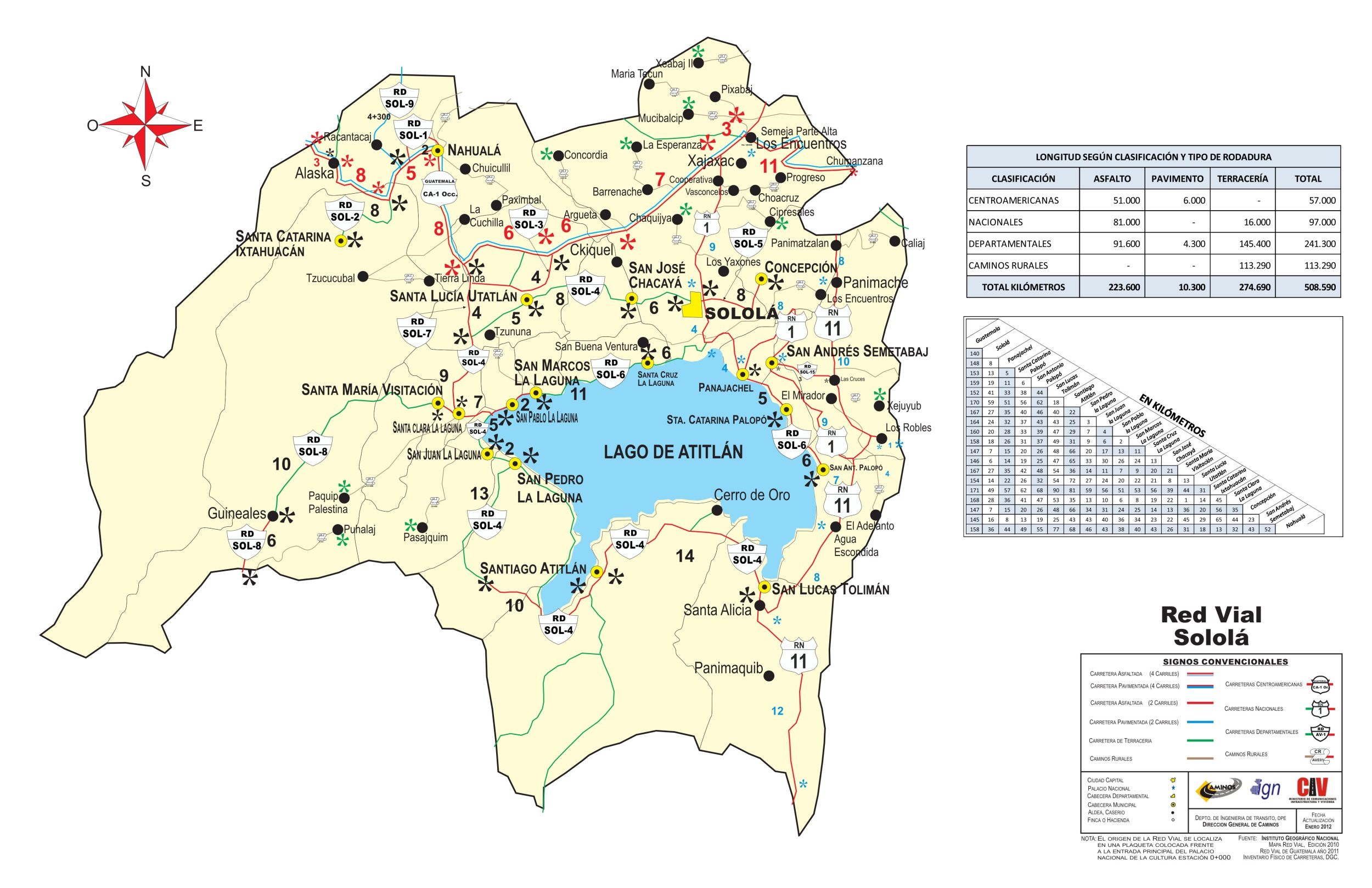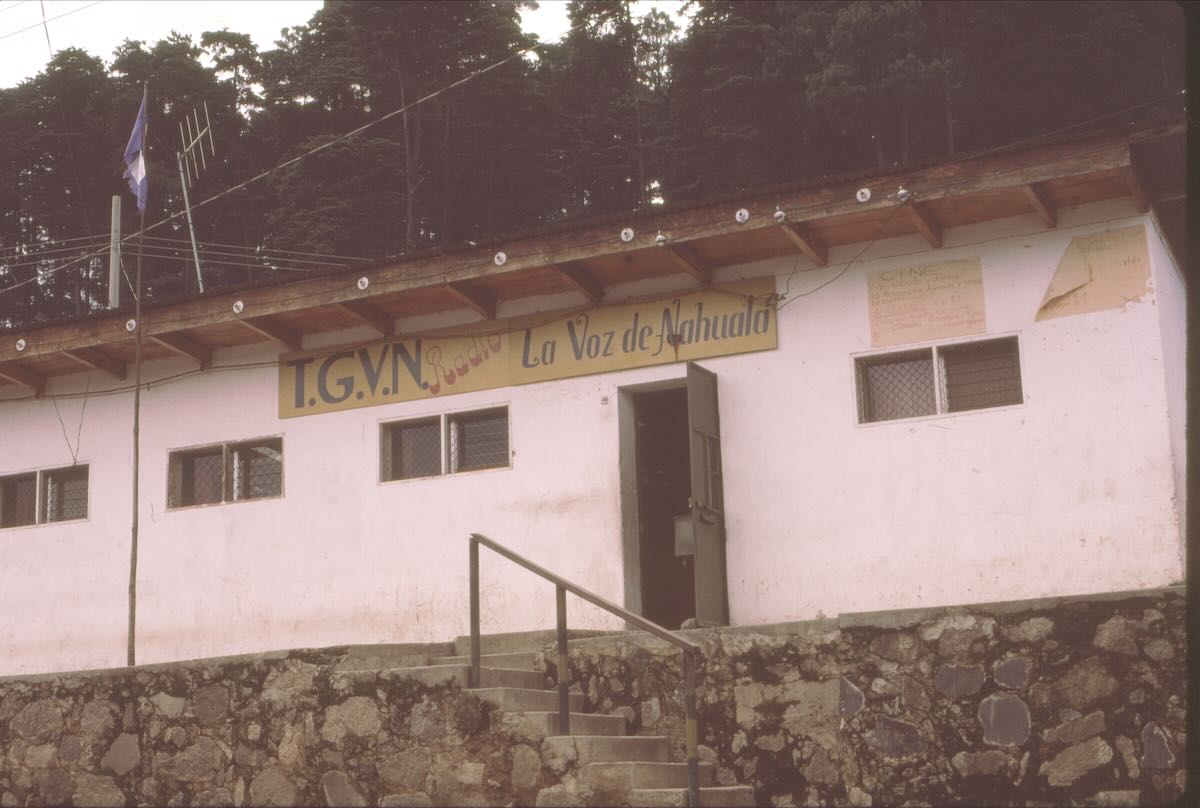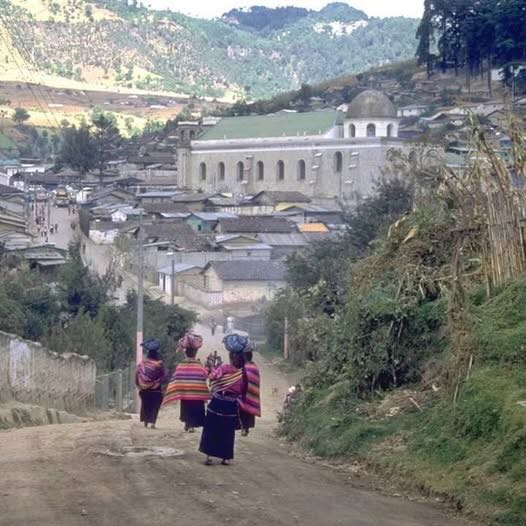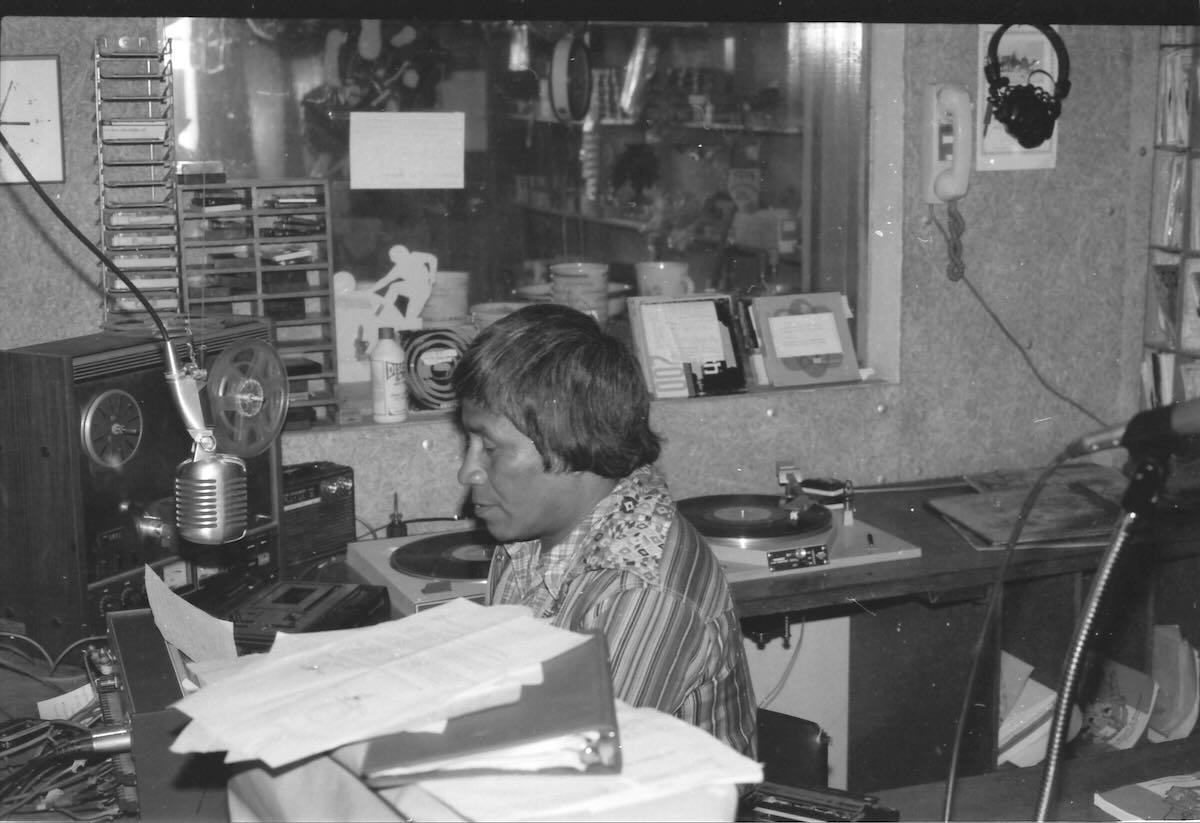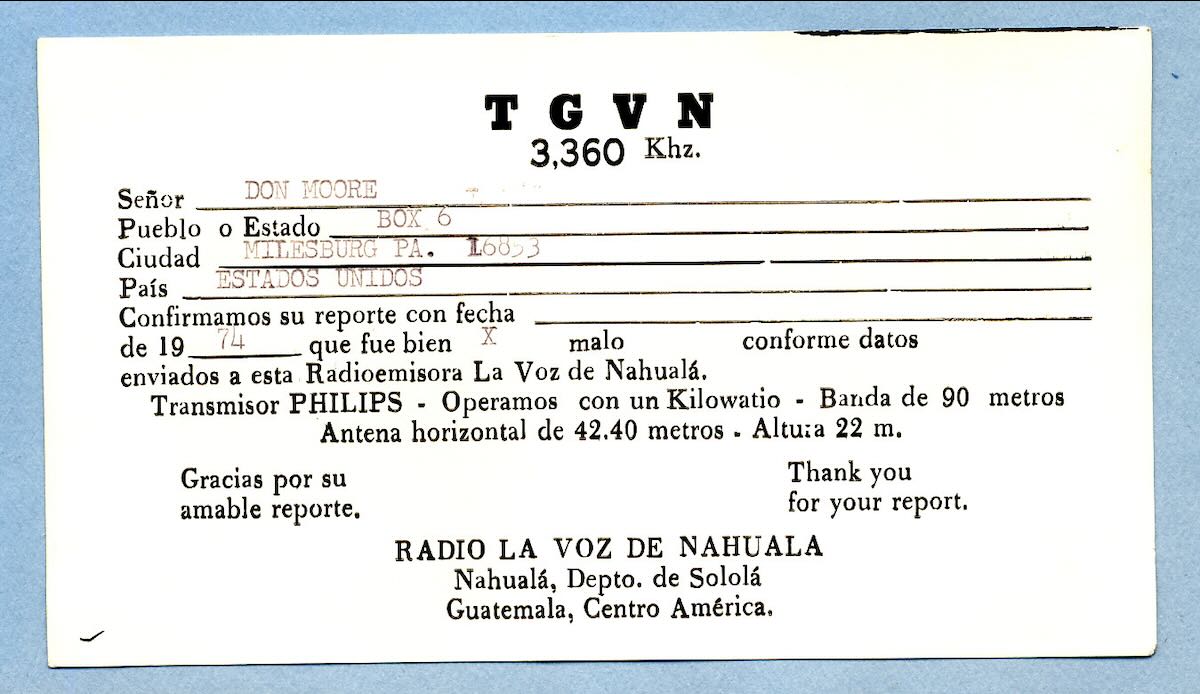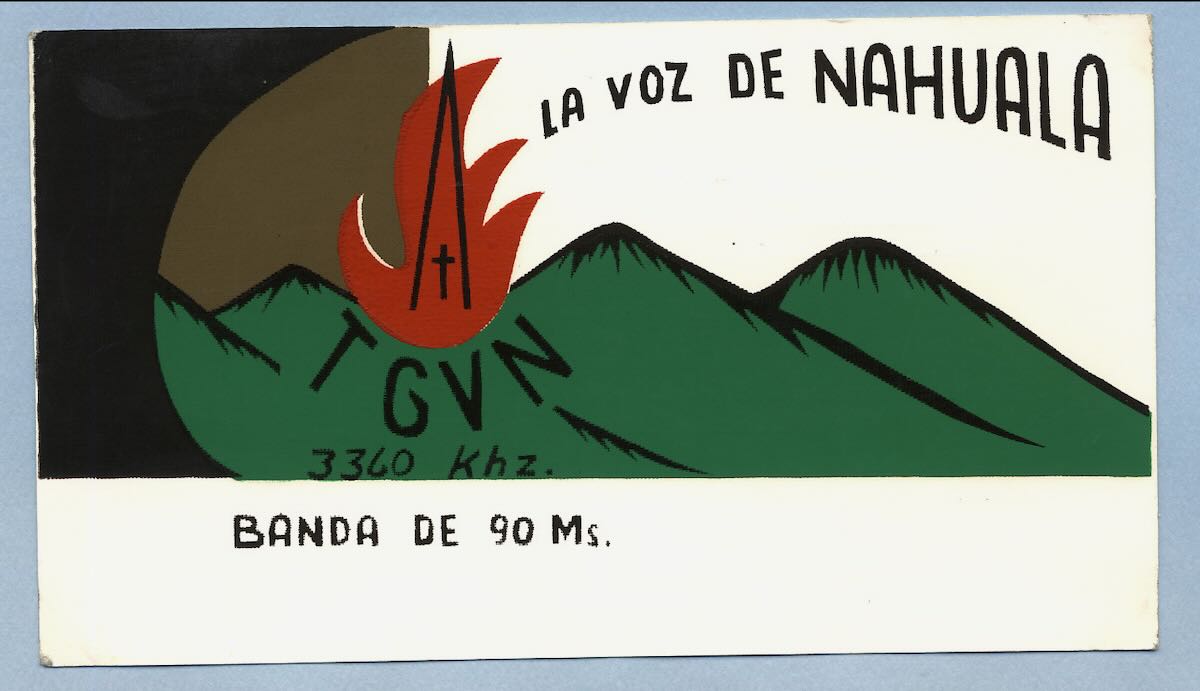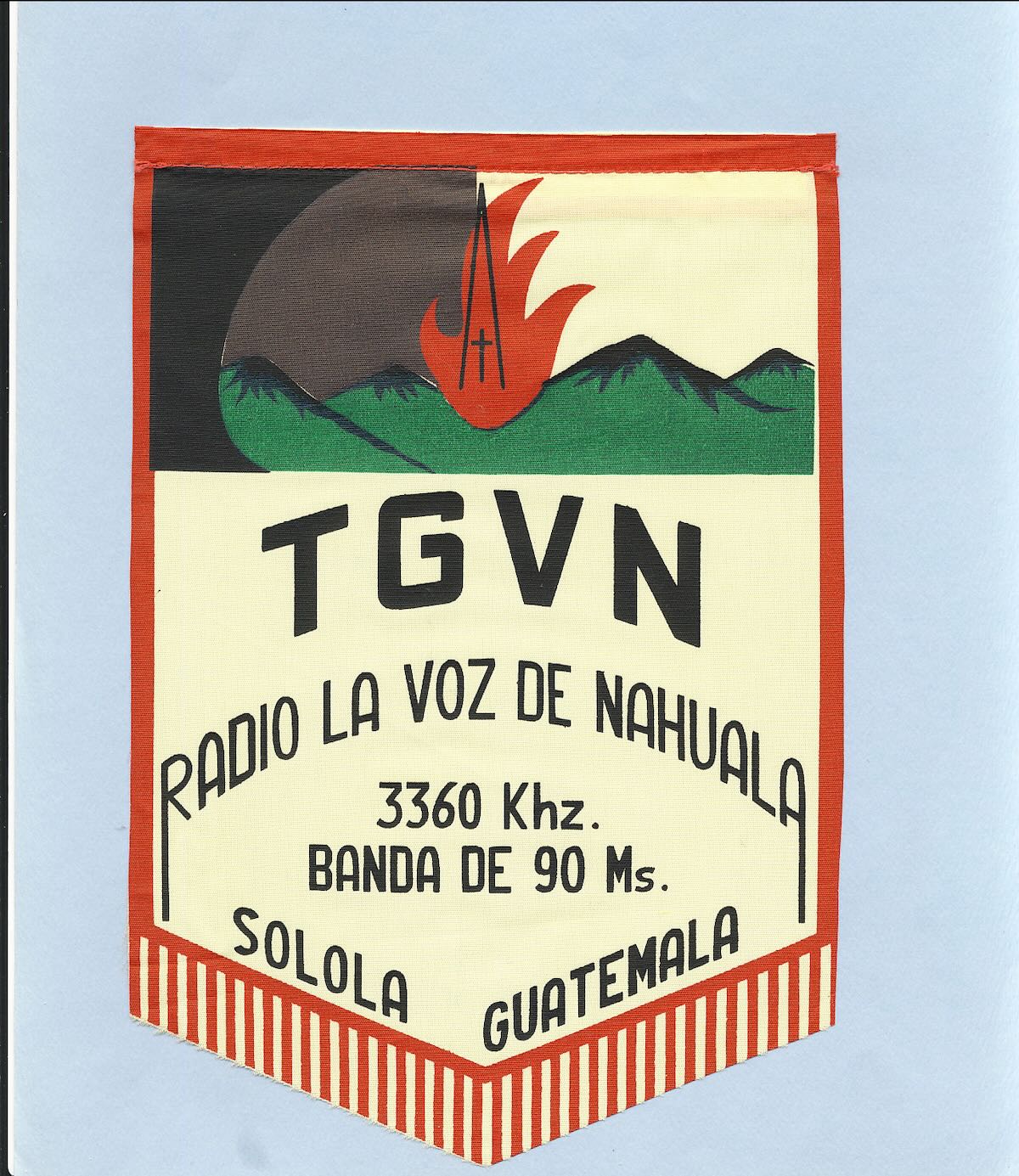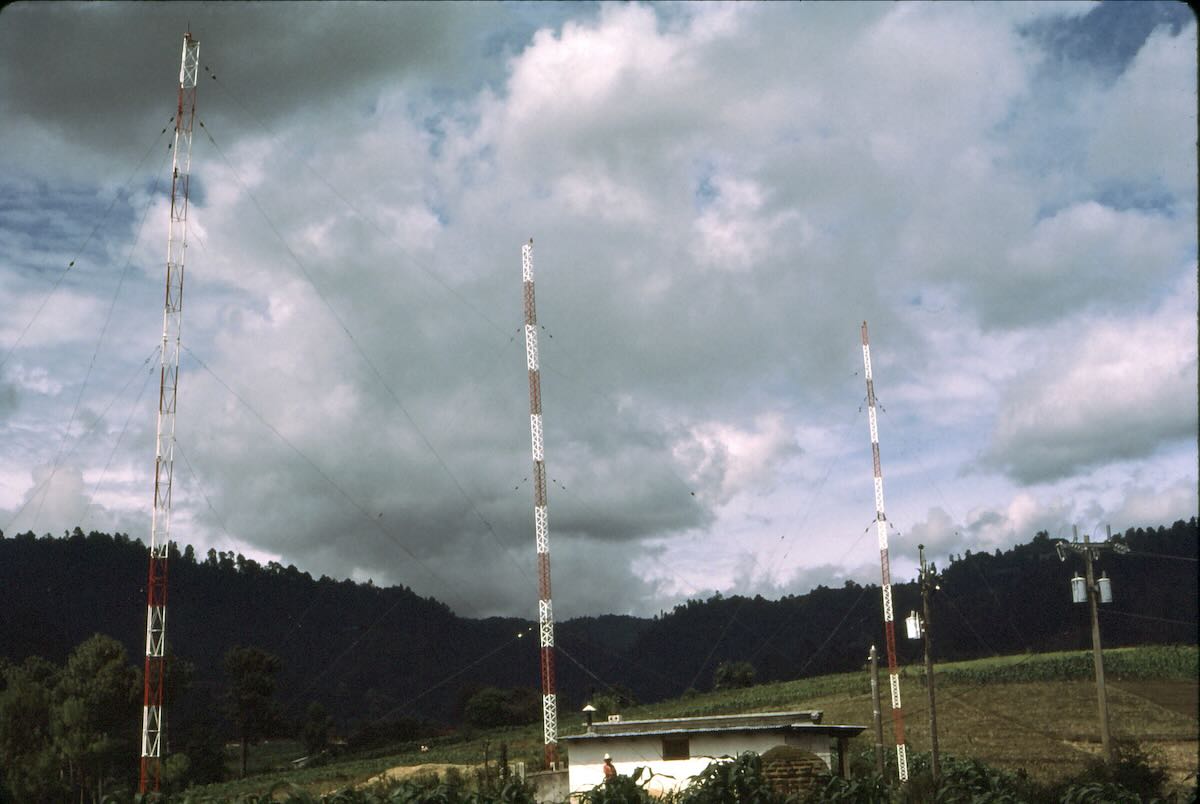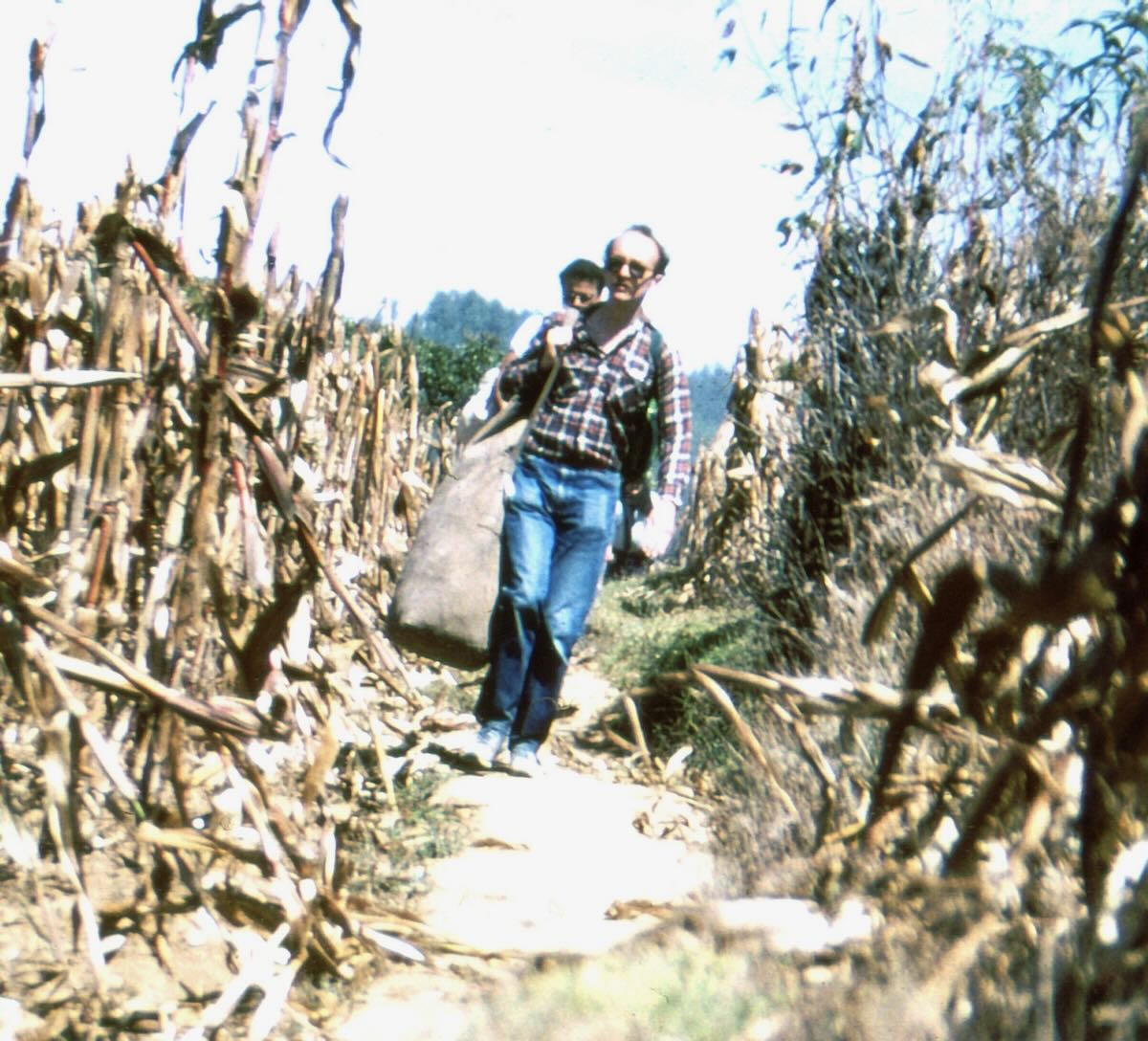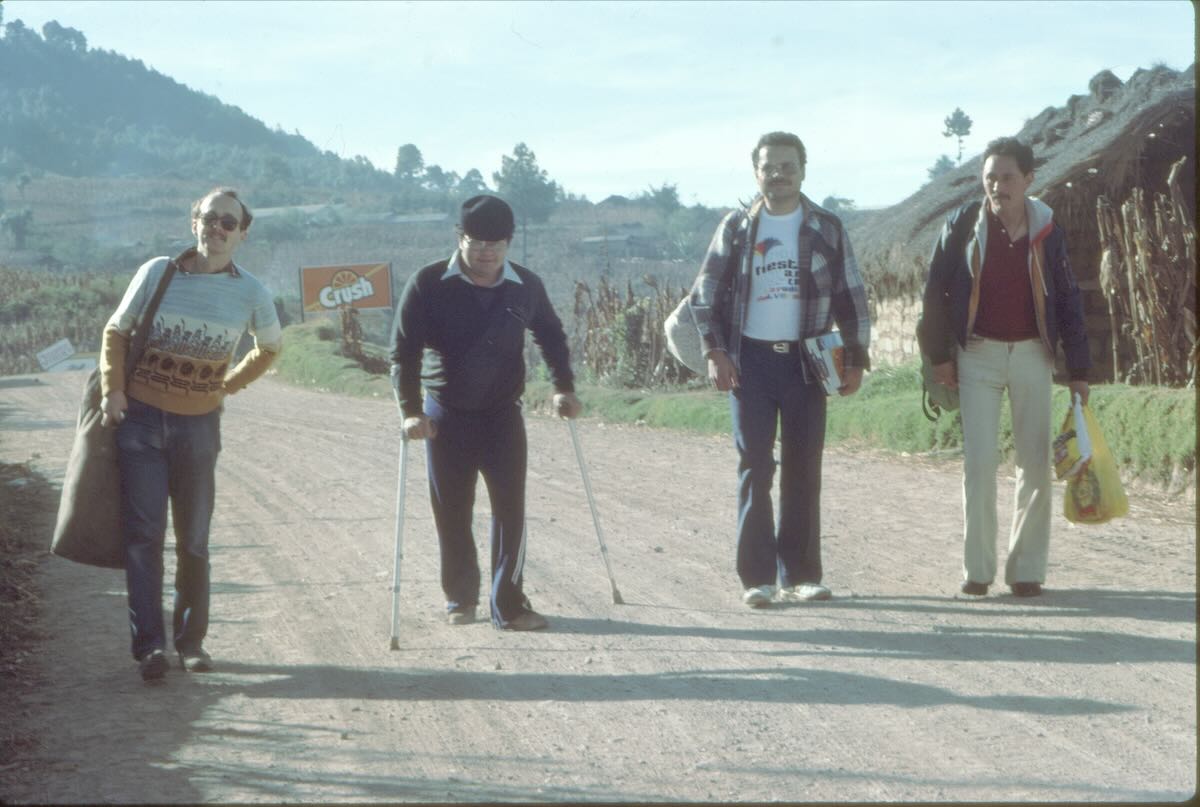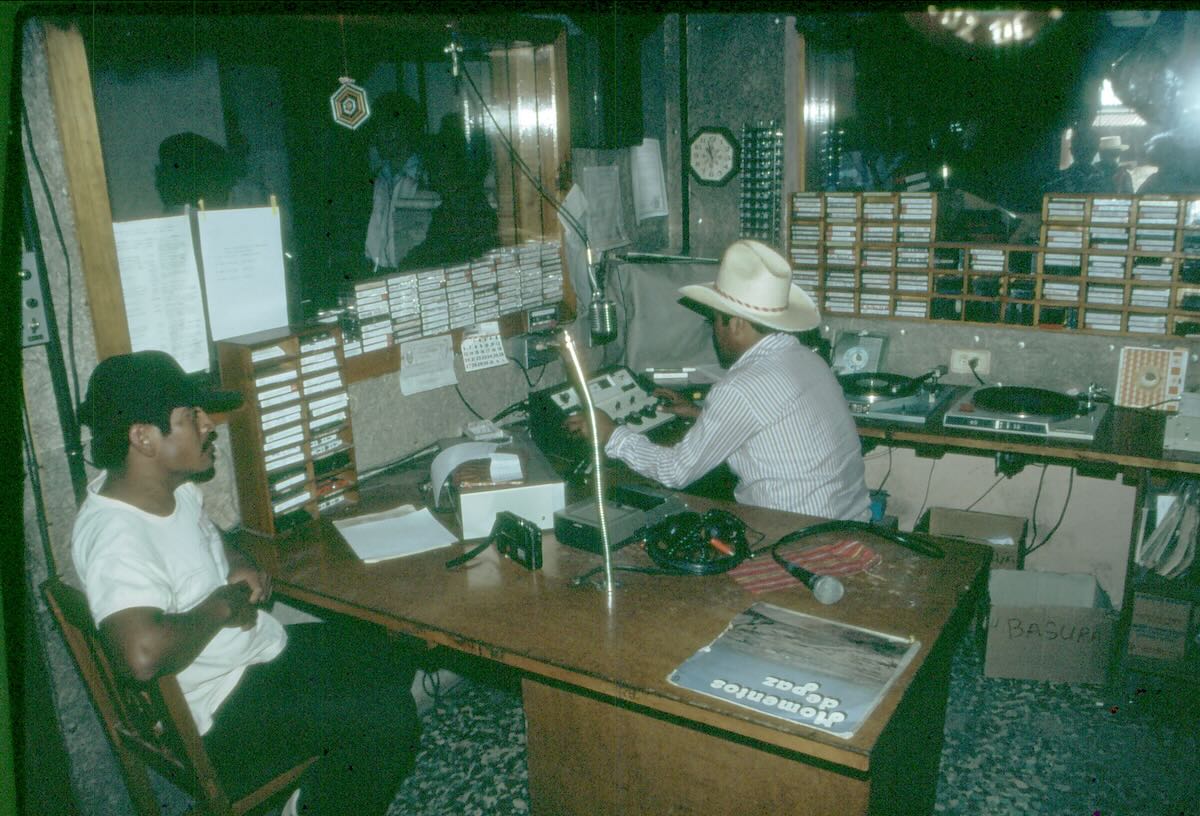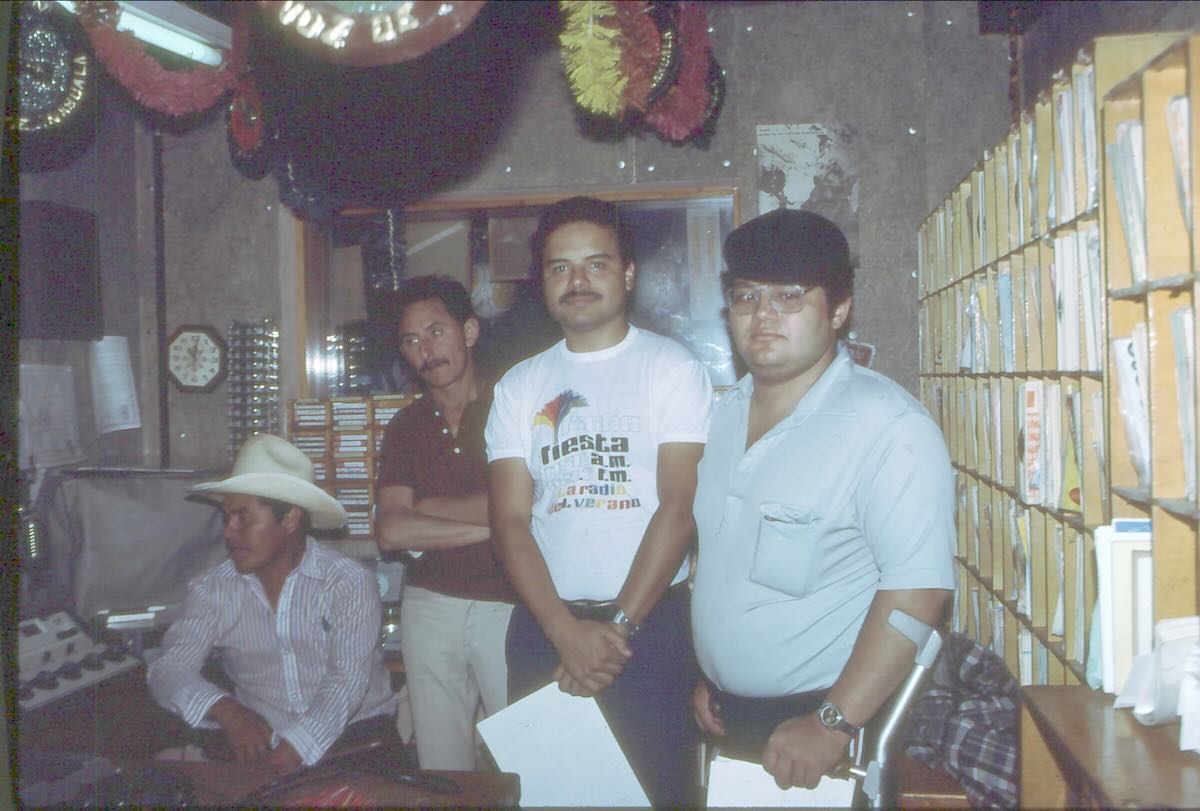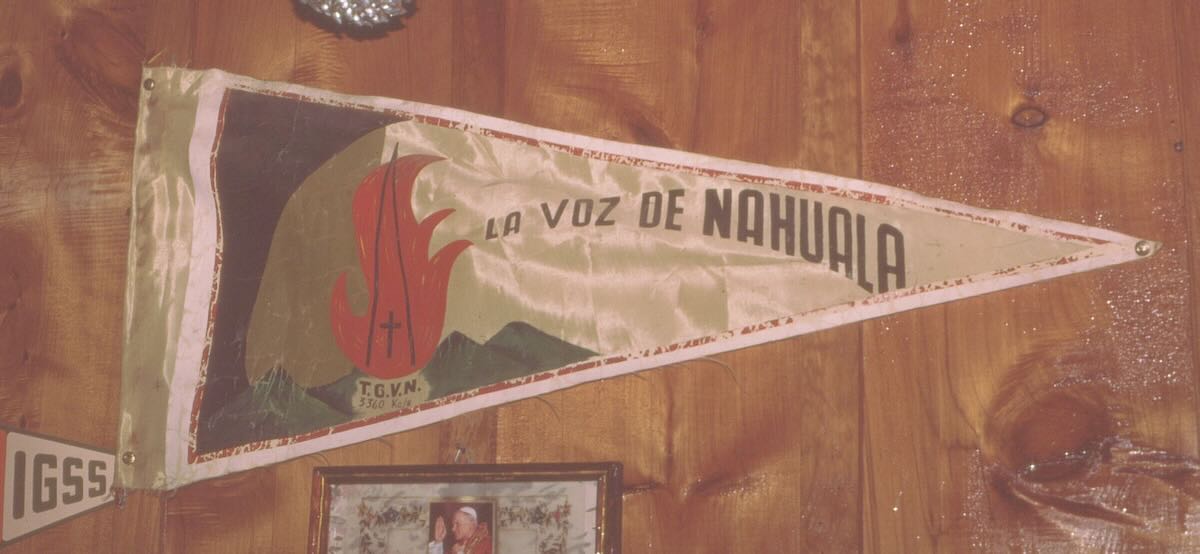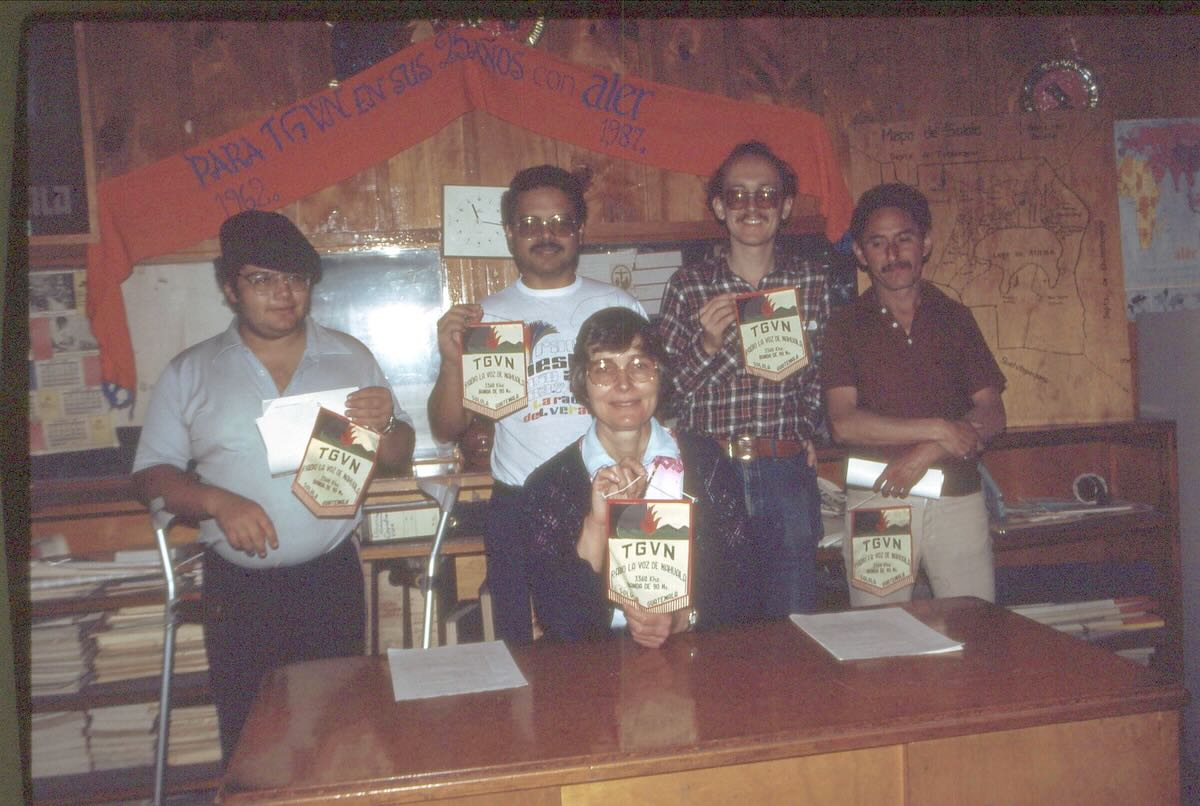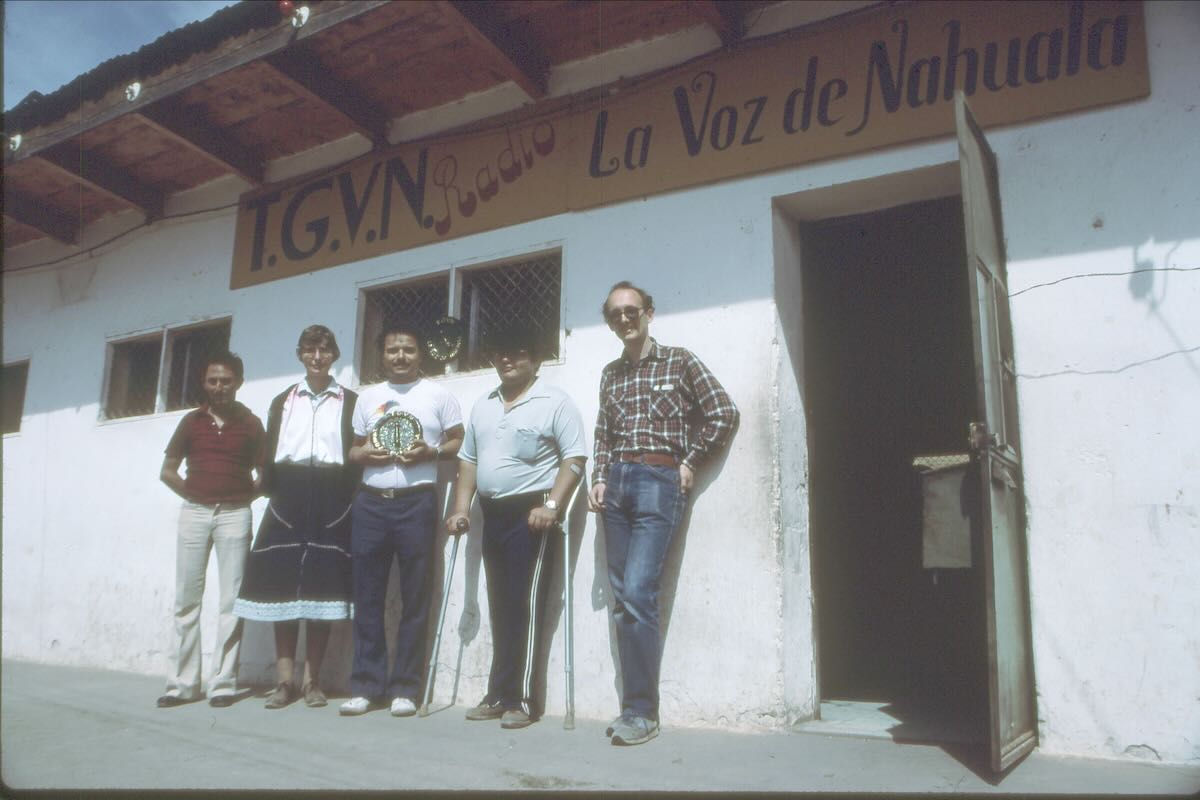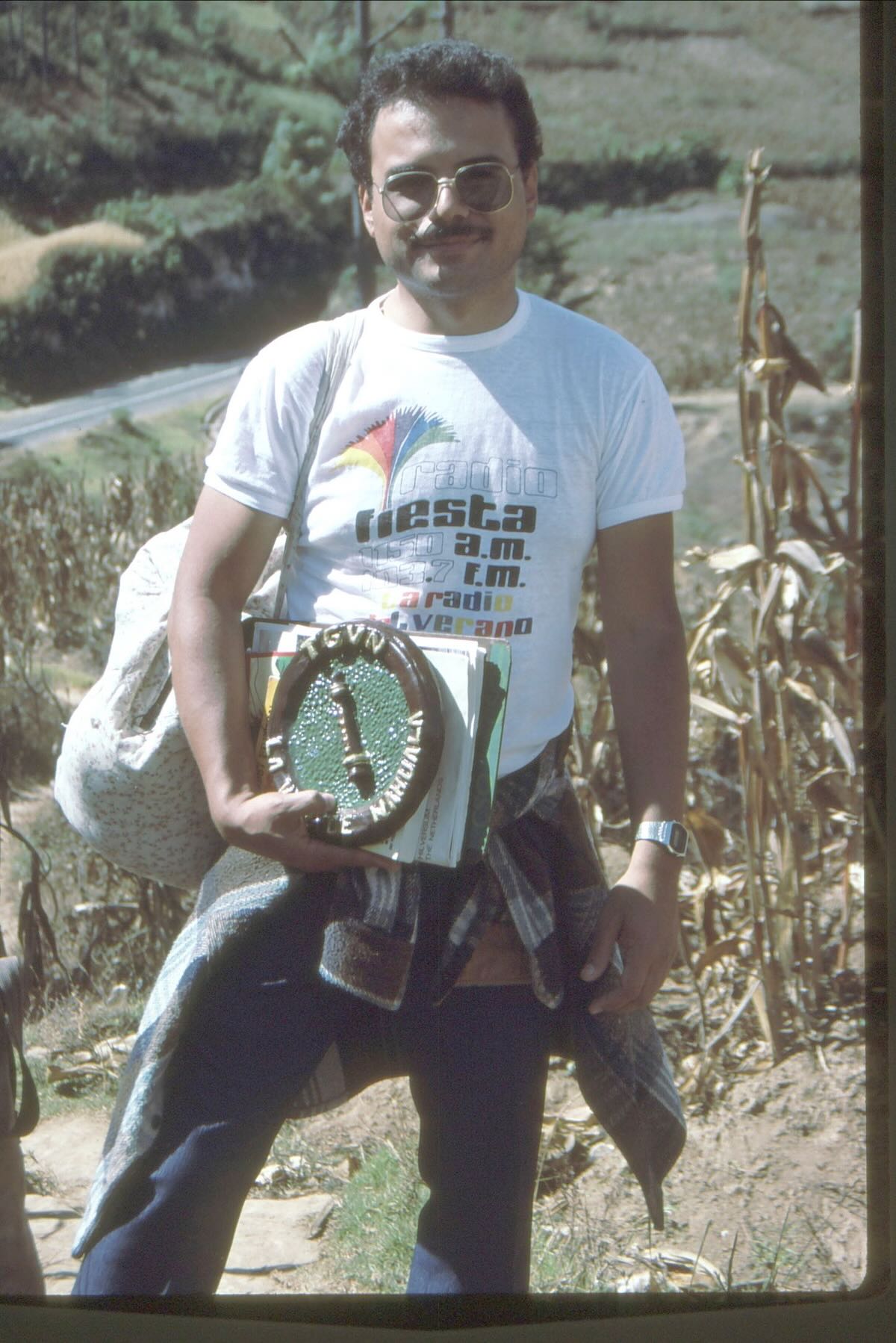Many thanks to SWLing Post contributor Don Moore–noted author, traveler, and DXer–for the latest installment of his Photo Album guest post series:
Don Moore’s Photo Album:
Guatemala (Part Five) – Visiting Nahualá
More of Don’s traveling DX stories can be found in his book Tales of a Vagabond DXer [SWLing Post affiliate link]. If you’ve already read his book and enjoyed it, do Don a favor and leave a review on Amazon.
After my first attempt to visit La Voz de Atitlán failed in June 1983, I turned my sights northward. The next morning in Panajachel I boarded a bus bound for Guatemala City but got off when the bus reached the main highway at the Los Encuentros intersection. A few minutes later I caught a ride on a ‘chicken bus’ headed north to my first destination of the day – Chichicastenango.
Chichicastenango is not a town that DXers would be familiar with but anyone who has seriously traveled around Guatemala has surely been there at least once. The outdoor markets held on Thursday and Sunday are among the largest in all of Central America. Guatemala has dozens of towns with long names ending in …tenango, meaning “place of.” Chichicastenango is the place of the chichicaste plant, in reference to a thorny bush that grows in the area. Most of the time people just call the town Chichi as it’s common to drop the tenango part from names when speaking.
For over five hundred years, Quiché Mayans from the surrounding area have been coming here twice weekly for the market held in the plaza in front of the Santo Tomás church. The steps to the church are always filled with flower vendors and men swinging containers of incense.
In the early days of the Spanish conquest, Catholic churches were often built on the sites already holy to the Indians. It was a clever way to get the newly forced converts to come to mass. In the case of Santo Tomás, however, they unknowingly picked a location of major spiritual importance in the Mayan religion. As a result many Mayan ceremonies involving nature and natural gods have survived in this area. Some became intertwined with Catholic practices while others were practiced in secret for centuries until it finally became safe to bring them out into the open again.
It was only June but I did my Christmas shopping that day and mailed everything home from Guatemala City a few days later. Guatemala’s post office was very reliable. Everything arrived safely in less than two weeks.
On to Nahualá
With my purchases packed in my now very heavy bag, I got on the next bus heading south and once again got out at Los Encuentros. This time I was looking for any bus heading west. I wasn’t going too far. A few minutes later a bus bound for Quetzaltenango stopped and I got on, telling the driver’s assistant that I wanted to get off at Nahualá.
I knew Nahualá was in the northwest corner of Sololá department a little way off the Pan-American Highway but I was surprised when about an hour later the bus stopped next to a cornfield in the middle of nowhere. I gave the driver’s assistant a puzzled look when he told me this was my stop. He explained that they could leave me off further down the highway where the road to Nahualá branched off. But it would be a long walk from there. From here, the walk was only about ten minutes. There was a well-worn path leading upwards through the cornfield, so I took him at his word.
Sure enough, as soon as I crested the trail I saw a church dome and then the houses of a little town ahead of me. I headed for the dome as I knew that would be the center of town. A campesino directed me to the radio station, one block up a dusty street.
First Mayan Station
La Voz de Nahualá had its start far to the north in Spokane, Washington, in the United States around 1960. A few years earlier Pope John XXIII had asked that Roman Catholic dioceses in wealthier countries begin mission projects to raise up the people in poorer parts of the world. The Diocese of Spokane committed itself to working with Guatemala’s Quiché Mayans and sent three priests to open the central mission in Nahualá. They immediately saw that the biggest need was education but they had so many people to serve in little towns and villages scattered over a rugged mountainous region.
One of the priests, Father John Rompa, realized what they needed was an educational radio station. In early 1962 he spent several weeks in Colombia studying the work of Radio Sutatenza, a model Catholic educational radio station. He returned to Guatemala, got a small transmitter and a radio tower, and put La Voz de Nahualá on the air. It would be the first educational radio station to broadcast in a Mayan language.
In the meantime, several nuns had arrived from Spokane to open schools in the town of Nahualá. Most of the programming for the new radio station was produced on site. The priests and nuns wrote programs on health, agriculture, and other topics in Spanish which was then translated into Quiché by bilingual catechists. One of the nuns developed methods to teach reading and writing over the radio. In 1965, Father Rompa returned to Spokane and Sister Janet Druffel became the director of La Voz de Nahualá, a position she would hold until 1990 when management was turned over to a local board.
Under Sister Janet’s leadership, La Voz de Nahualá became a model educational radio station. Adult literacy centers were set up in over three hundred communities so that listeners could gather together and learn together. On-air classes were held in health, agriculture, social studies, the natural sciences, and other subjects.
One of the most important subjects was Spanish. In the early 1960s less than three percent of the Quiché spoke Spanish but knowledge of the language was the only way to be part of the broader Guatemalan society. Then as more and more Quiché became bilingual and integrated into the national society that created another goal for the station – promoting and preserving traditional Quiché culture. Later programs were added in Cakchiquel, another major Mayan language spoken in La Voz de Nahualá’s coverage area.
Historical photo of the entrance to Nahualá from the town’s official Facebook page.
The First Visit
It was almost three p.m. when I walked through the front door. Two staff members warmly welcomed me and explained they were about to begin the afternoon broadcast. One asked me to write my name on a piece of paper and directed me to sit in a chair next to the announcer’s table. I listened to him give the sign-on identification and announcements in Spanish and Quiché. As he continued in Quiché he read my name from the paper. He then switched to Spanish and told the audience that he was going to interview a guest who had just arrived from the United States.
It would have been nice if he had given me a little advance warning that I was going to be interviewed. Nevertheless, the interview went well. I had had my first on-air interview only a few days before at Super Radio in Guatemala City. In the meantime Sister Janet arrived. I introduced myself and she told me more about the station’s work and showed me some reception reports sent by DXers. I had verified La Voz de Nahualá in 1974 but was happy to get one of the newer station pennants.
It was getting late but I still had time to hike up the hill behind town to the station’s transmitter site. That also gave me a good view of the tiny town down below. Then I retraced my steps through town and back through the cornfield to the highway. A few minutes later I flagged down a bus heading east.
Return to Nahualá
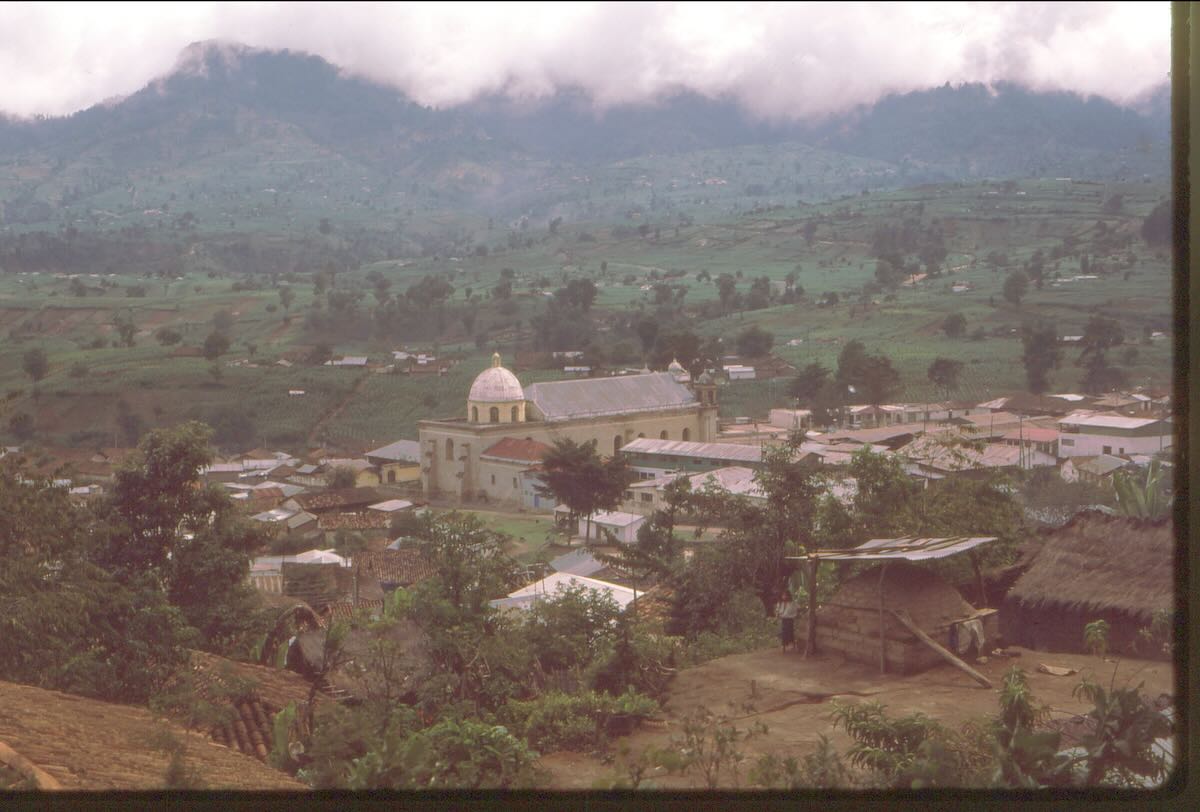
Three months later, in September 1983, I returned to Chichicastenango with several Peace Corps friends but there was no reason to take my companions to Nahualá. A few months later I traveled through Guatemala to Mexico. I watched as my bus passed the path through the cornfield and then a little further on I got a glimpse of the town.
In December 1987 I was in Guatemala City once again with my (ex) wife. The plan was to spend several days there, travel to Chichicastenango on Saturday to be there for the Sunday market and then spend several days in Panajachel before heading further west. There were no plans to revisit Nahualá but several of my friends in the Guatemala DX Club had another idea. Let’s all take an early Saturday morning bus to Quetzaltenango and get off at Nahualá to visit the radio station, they said. Then they would return home to Guatemala City and we could go to Chichicastenango. It was a good plan. And this time, I knew where to get off the bus.
Walking through the cornfield. Being in transit, we had our luggage with us. That military surplus duffle bag made several trips to Latin America.
Don Moore, Ralf Gruner, Edgar Oliva, and someone whose name I forgot on the road to Nahualá.
My companions were all middle-class city residents. On the road we met a wrinkled barefoot old Mayan woman. She came over and gave Ralf her blessing and then pressed a small coin into his hand. She refused to take the coin back – I think she didn’t understand Spanish. Ralf was embarrassed but the woman’s generosity was heart-warming to us all.
La Voz de Nahualá studio in 1987.
DXers visiting the studio.
This huge pennant was from the 1960s.
Showing off our new pennants with Sister Janet.
A final picture before leaving.
I can’t remember how Edgar got the ceramic wall plaque but he was very pleased with it.
Recordings
La Voz de Nahualá 3260 kHz on October 9, 1980:
La Voz de Nahualá 3360 kHz December 23, 1980:
Epilogue
I haven’t been back to Guatemala since 1987 but writing this series has brought back many old memories. I can see myself returning sometime in the next two or three years. I’m not sure if I would return to Nahualá, however. I doubt there’s anyone still at the station who remembers when they broadcast on shortwave. And Nahualá is no longer the little town it was in the 1980s. It’s grown into a small city. Satellite view on Google Maps shows that Nahualá has spread out in every direction, including down to the Pan-American Highway (now four lanes). The cornfield is gone. I can’t imagine visiting Nahualá without walking through a cornfield.
The author on the church steps in Chichicastenango in September 1983.
Next: Part Six – Huehuetenango
Links
- Website for Nawal Estereo, the name given to La Voz de Nahualá when the station changed to FM.
- Six-minute video with English subtitles about Nawal Estereo made in 2009.
- A Spanish language video about visiting Nahualá. At thirteen minutes in he spends several minutes at Nawal Estereo.
- An excellent article on the early history of the Spokane mission with a lot of information on the radio station.
- Obituary for Sister Janet Druffel.
- Official Facebook page for the town of Nahualá.
- Spanish language website for the Federation of Guatemalan Radio Schools. La Voz de Nahualá was a founding member.
- Recently-made video on the Chichicastenango market. It doesn’t appear to have changed much other than having expanded to the side streets.
- Pictorial article on the Chichicastenango market.
- La Camioneta (2012). Official website for this documentary that told the story of an old American school bus that was driven from Pennsylvania to Guatemala and then remade into a colorful ‘chicken bus’. It’s well worth watching if you can find it on your favorite streaming platform. (Do not confuse this with a 1996 film with the same name.)
- On traveling by ‘chicken bus’ in Guatemala.
- Reasons to love ‘chicken buses’

